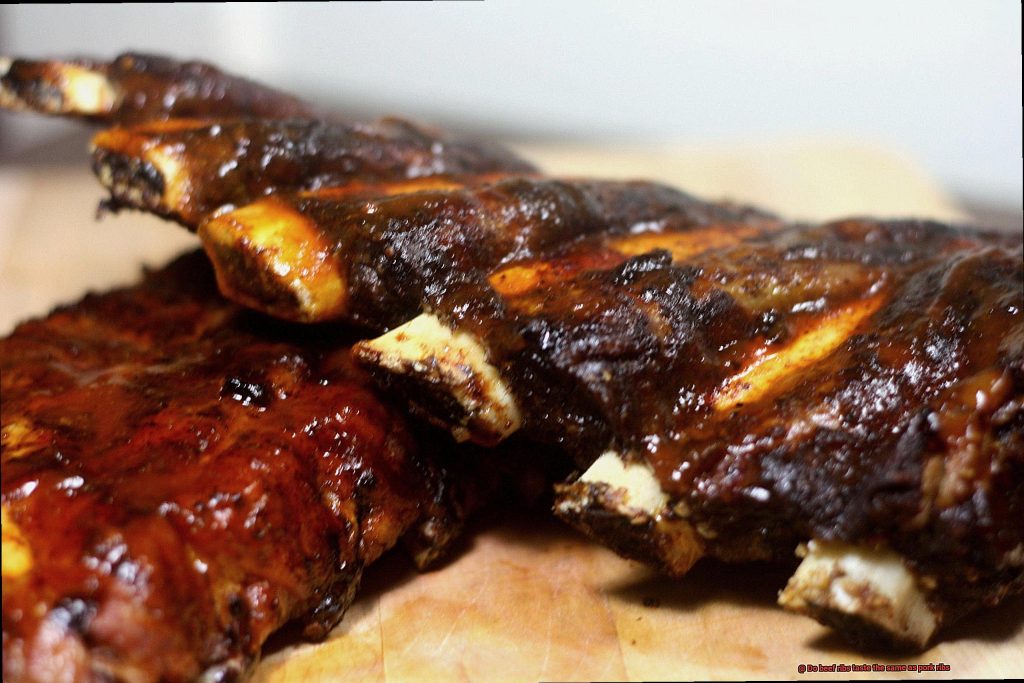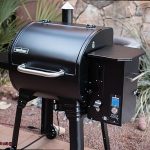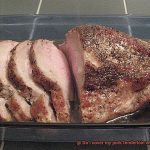Hey there, fellow barbecue enthusiasts. Are you someone who can’t resist the tantalizing aroma of slow-cooked meat? If yes, then you must have tried both beef and pork ribs at some point. But, have you ever wondered if they taste the same?
Beef and pork ribs may look similar, but their flavor profiles are quite distinct. Beef ribs are known for their bold and rich taste, while pork ribs are sweeter and more tender. However, the cooking method, spices used, and sauces applied can significantly alter the taste of both types of ribs.
In this blog post, we’ll explore the differences between beef and pork ribs in terms of texture, taste, and overall eating experience. Whether you’re a seasoned pro or a newbie to the world of barbecue – we’ve got something for everyone. So sit back, relax and get ready to learn whether beef ribs taste the same as pork ribs. Trust us; it’s going to be a mouth-watering journey.
Contents
A Comparison of Beef and Pork Ribs
Let’s start with taste. Beef ribs pack a powerful punch with their robust and intense flavor, while pork ribs have a sweeter and milder taste. The higher fat content in beef contributes to its richer flavor, making it a bold choice for those who crave strong flavors. On the other hand, pork ribs offer a lighter option for those who prefer something more subtle.
Texture is another important factor when it comes to ribs. Beef ribs tend to be tougher and chewier than pork ribs, which can impact the overall enjoyment of the meat. In contrast, pork ribs have a softer texture and are easier to cook. If you’re looking for melt-in-your-mouth meat that falls off the bone, pork ribs are definitely the way to go.
Now, let’s delve into the different types of ribs. Beef ribs come in two main varieties: short ribs and back ribs. Short ribs are cut from the chuck section of the cow and have a higher fat content, resulting in more tender and flavorful meat.
Back ribs, on the other hand, are cut from the rib section of the cow and have less fat, resulting in leaner but still delicious meat. Pork ribs have three main types: baby back ribs, spare ribs, and St. Louis-style ribs. Baby back ribs are cut from the loin section of the pig and are leaner with a slightly sweet taste. Spare ribs, cut from the belly section of the pig, have more fat and are juicier with a more pronounced flavor.
Finally, St. Louis-style ribs are similar to spare ribs but have been trimmed to remove excess fat or cartilage.
The Taste of Beef Ribs
As a connoisseur of beef ribs, I can attest that these succulent cuts of meat are bursting with bold, meaty flavor that sets them apart from their pork counterparts. But what exactly contributes to the taste of beef ribs?
Firstly, the type of meat used plays a crucial role in determining the flavor profile. Short ribs are known for their rich and beefy taste, while back ribs offer a more delicate and tender flavor. Knowing the differences between these cuts will help you choose which one best aligns with your taste preferences.
The cooking method used is also an important factor to consider when it comes to beef ribs. Slow-cooking methods such as smoking or braising allow the meat to absorb smoky or savory flavors, resulting in a mouthwatering taste that lingers on your palate. Alternatively, grilling or broiling can produce a charred flavor that may mask the natural taste of the beef. Thus, it’s essential to select the right cooking method that complements the beef rib’s taste.
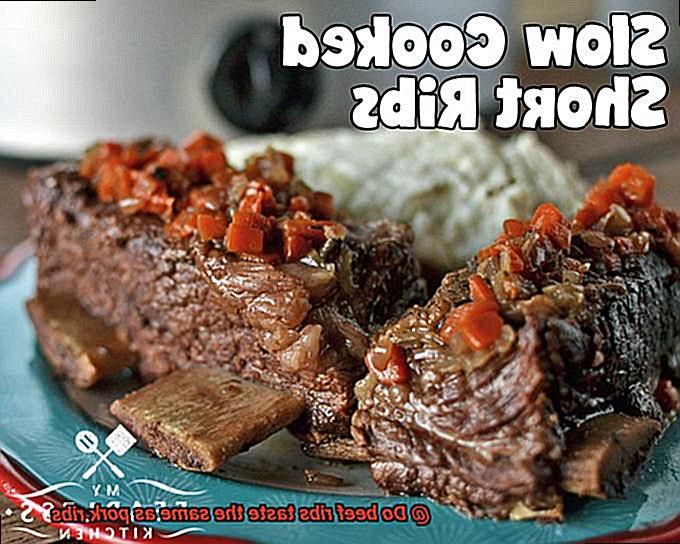
Seasonings and spices can further enhance the beef rib’s flavor profile. Staples like garlic, onion, paprika, and chili powder add depth to the meat’s natural taste and make it more flavorful. These seasonings complement the beef’s richness without overpowering it.
Marinades are another way to elevate the taste of beef ribs. Not only do they introduce new flavors, but they also help tenderize the meat. A marinade made of soy sauce, brown sugar, and Worcestershire sauce can add a sweet and savory dimension to your beef ribs.
The Taste of Pork Ribs
If you’re a fan of grilling and barbecuing, then you know that pork ribs are the ultimate meat to cook up. Their juicy and tender texture, combined with their rich and savory flavor, make them a true flavor sensation that every meat lover simply must try.
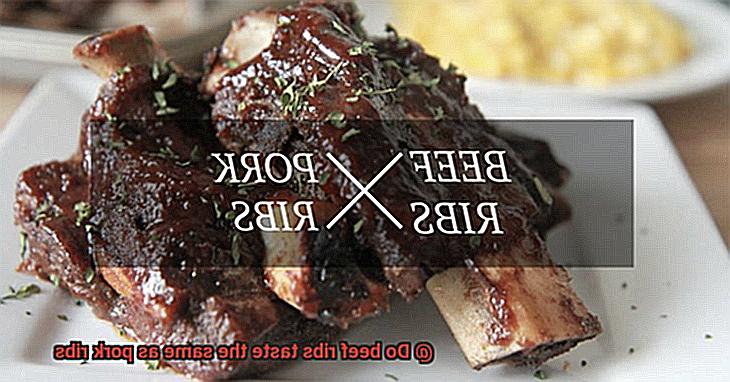
So, what makes the taste of pork ribs so unique? For starters, their flavor is sweet and smoky, with a hint of saltiness. This delectable taste comes from the combination of the meat itself and the seasoning or marinade used. A dry rub or marinade that includes brown sugar, paprika, garlic, onion powder, and salt is commonly used to complement the natural sweetness of the pork meat. This creates a well-balanced and delicious taste that tantalizes the taste buds with every bite.
But it’s not just about the flavor – the texture of pork ribs is also something to marvel at. When cooked properly, pork ribs should be tender enough to fall off the bone while still having a crispy exterior. This creates a texture that is both crunchy and tender at the same time, making for a truly satisfying eating experience.
When it comes to comparing pork ribs to beef ribs, there’s no contest. Pork ribs have a sweeter and smokier flavor that can’t be replicated by any other type of meat. While beef may have a similar texture, it simply doesn’t have that distinctive taste that sets pork ribs apart.
Differences in Cooking Methods
Whether it’s beef or pork, understanding the differences in cooking methods is key to achieving mouth-watering perfection. As an expert in this area, let me guide you through these differences and help you create the perfect dish every time.
Let’s start with beef ribs. These are larger and tougher than pork ribs, which means they require a longer cooking time and a lower temperature. There are two main ways to cook beef ribs: low and slow or high heat.
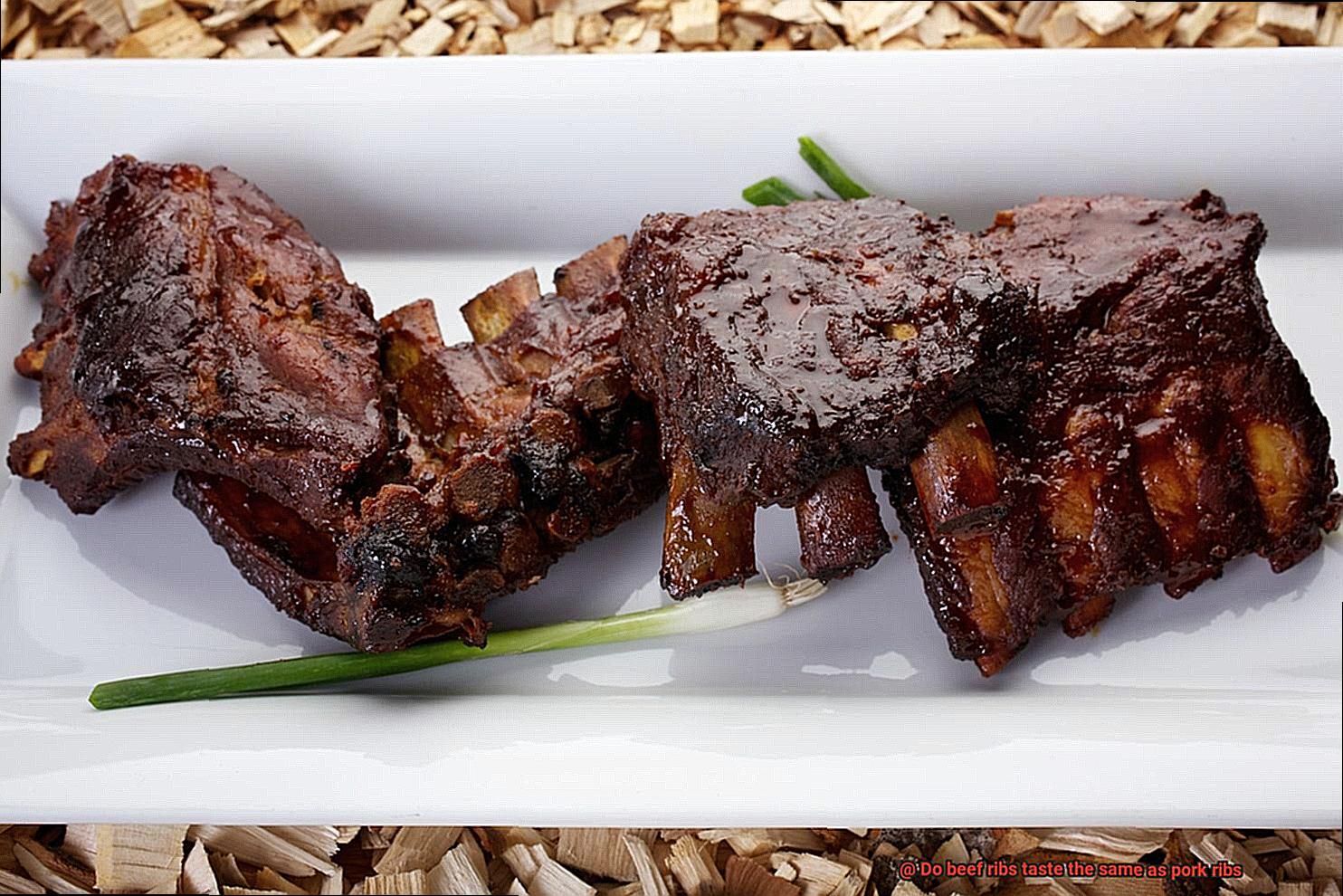
Low and slow cooking involves cooking the beef ribs at a low temperature of around 225°F for several hours. This method is perfect for smoking beef ribs as it allows the smoke flavor to penetrate the meat slowly over time. The result is fall-off-the-bone tender meat that is packed with smokiness and flavor.
For those who love a crispy outer crust, high heat cooking is the way to go. Grilling or broiling beef ribs at a high temperature of around 400°F sears the outside of the meat and locks in all the juicy goodness. This method is ideal for beef ribs that have been marinated or seasoned with dry rubs.
Now let’s talk about pork ribs. These are smaller and more delicate than beef ribs, which means they cook faster and require a higher temperature. There are three main ways to cook pork ribs: smoking, grilling, or baking.
Smoking pork ribs involves cooking them at a low temperature of around 225°F for several hours with wood smoke to infuse flavor into the meat. This method produces tender, smoky meat with a sweet and savory flavor that will have your taste buds dancing.
Grilling pork ribs over direct heat on a grill creates crispy, caramelized edges while keeping the meat underneath juicy and flavorful. This method is perfect for those who want their ribs with a bit of charred goodness.
Finally, baking pork ribs in an oven at a low temperature of around 275°F is an excellent method for achieving fall-off-the-bone meat that is easy to shred and serve. This method produces meat that is tender, juicy, and packed with flavor.
Factors That Affect the Flavor of Beef and Pork Ribs
As an expert in all things meat, I’m here to delve into the factors that impact the flavor of these beloved meats.
First on our list is breed. The breed of the animal can affect the marbling in the meat, which ultimately affects its flavor and tenderness. Angus or Hereford breeds are typically used for beef ribs, while Berkshire or Duroc breeds are commonly used for pork ribs.
Next up is diet. The diet of the animal can surprisingly have an impact on the taste of the meat. Grass-fed beef has a different flavor than grain-fed beef, while pork raised on a varied diet can have a more complex and nuanced flavor than pork raised on a single feed.
Now let’s talk cuts. Beef ribs usually come from the short plate or brisket area, while pork ribs come from the belly or side area. The amount of fat and connective tissue in each cut can significantly influence both flavor and tenderness.
Moving onto cooking methods, slow-cooking techniques such as smoking or braising can intensify the natural flavors of both beef and pork ribs. On the other hand, grilling over high heat imparts a smoky charred flavor to both types of ribs.
Last but not least, seasoning plays a crucial role in bringing out the unique flavors of beef and pork ribs. Rubs and marinades can enhance the natural flavors of the meat or add additional notes such as sweet or spicy flavors.
How to Choose Between Beef and Pork Ribs
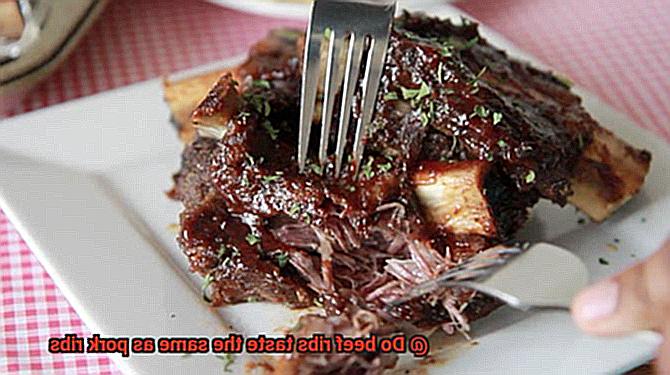
Choosing between beef and pork ribs can be a tough decision, but there are several factors to consider to make the right choice. Let’s explore these factors in more detail.
Flavor:
Beef ribs have a bold, meaty flavor that is often described as savory and satisfying. They have a slightly sweet taste, which gives them a unique flavor profile. On the other hand, pork ribs have a more subtle flavor with a hint of sweetness and smokiness. The meat is naturally sweeter than beef, giving pork ribs a distinct taste. Ultimately, it comes down to personal preference when choosing between the two flavors.
Texture:
Beef ribs are typically larger and meatier than pork ribs, with a chewier texture. The meat tends to be tougher and requires longer cooking times to break down the fibers and achieve a tender, juicy texture. Pork ribs are smaller and more tender, with a melt-in-your-mouth texture that makes them easier to eat and enjoy. If texture is an important factor for you, consider which one you prefer.
Cooking Time:
Beef ribs take longer to cook than pork ribs due to their size and amount of fat and connective tissue. They require longer cooking times at lower temperatures to achieve a juicy and tender texture. Pork ribs cook faster at higher temperatures and can be finished in as little as 2-3 hours. If you’re short on time or looking for something quick and easy, pork ribs might be the better option.
Cost:
Beef ribs are generally more expensive than pork ribs due to their larger size and amount of meat per rib. If you’re on a budget or looking for an affordable option, pork ribs might be the better choice.
Occasion:
Consider the occasion when choosing between beef and pork ribs. For casual barbecues with friends and family, pork ribs are a great choice due to their tender texture and versatility in terms of seasoning and cooking methods. For more formal events or dinner parties, beef ribs can add a touch of elegance and sophistication to the meal.
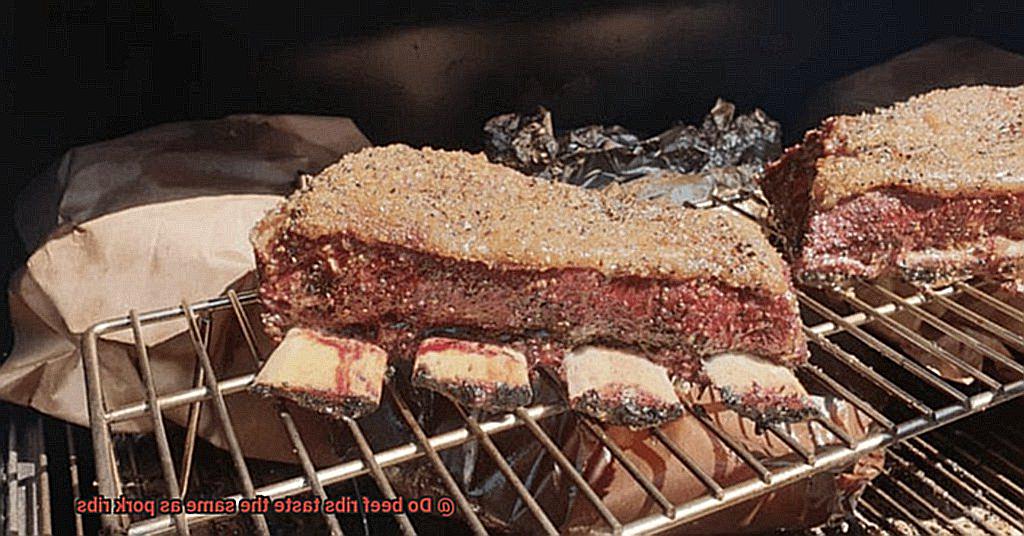
Tips for Perfectly Cooked Ribs
Achieving that ideal balance of tenderness, juiciness, and flavor can be tricky. Luckily, we’ve got some tips and tricks to help you cook up the best ribs of your life.
Choose the Right Cut of Meat
The first step to perfect ribs is choosing the right cut of meat. Short ribs are the way to go for beef lovers, while baby back or spare ribs are ideal for pork aficionados. These cuts are more tender and flavorful than others, making them perfect for succulent, fall-off-the-bone ribs.
Use a Dry Rub
A great dry rub is key to flavorful ribs. Mix together your favorite spices and seasonings (such as paprika, garlic powder, onion powder, salt, and pepper) and rub them all over your ribs before cooking. This will infuse your meat with delicious flavor that will keep you coming back for more.
Cook Low and Slow
The secret to perfectly cooked ribs is low and slow cooking. Aim for a temperature of around 225-250 degrees Fahrenheit and cook your ribs for several hours until they’re tender and cooked through. If you have access to a smoker, use it – smoking your ribs adds a unique smoky flavor that’s hard to beat.
Baste with Sauce
If you’re using BBQ sauce on your ribs (and let’s be real – who isn’t?), wait until the last hour of cooking to baste them with sauce. This will prevent the sauce from burning and ensure it sticks to the meat. You can even experiment with different sauces to find your perfect flavor profile.
Remove the Membrane
Before cooking your ribs, make sure to remove the thin membrane on the bone side of the rack. This will make your meat more tender and allow for better absorption of rubs and marinades.
zRWvWe08HTA” >
Conclusion
In conclusion, it’s clear that beef and pork ribs are not interchangeable when it comes to taste. While beef ribs boast a bold and rich flavor profile, pork ribs tend to be sweeter and more tender. However, both types of meat can be transformed by the cooking method, spices used, and sauces applied.
Texture is another key differentiator between the two meats. Beef ribs tend to be tougher and chewier than their pork counterparts. Pork ribs have a softer texture that makes them easier to cook to perfection. And when it comes to cuts, beef ribs come in two main varieties while pork has three: baby back, spare, and St. Louis-style.
But what really impacts the flavor of both meats is a combination of factors including breed, diet, cut, cooking method, seasoning, and marinades. Choosing between beef or pork ribs ultimately depends on your personal preferences for flavor and texture as well as other factors like occasion or cost.
No matter which type of rib you choose though, achieving perfectly cooked meat requires choosing the right cut with a great dry rub infused with delicious flavors cooked low and slow at around 225-250 degrees Fahrenheit until tender with basting sauce applied at the last hour of cooking.

